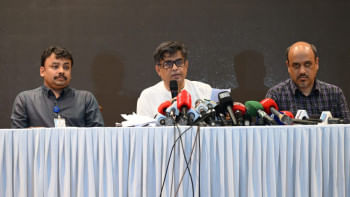Why local garment industry must go nano

The rhythmic clatter of sewing machines may still define Bangladesh's garment factories, but in the near future, that familiar sound could fade beneath the shimmer of self-cleaning fabrics and the quiet of nanotechnology at work.
As global apparel production enters a new era of advanced materials and smart design, nanotechnology, engineering at the molecular level, is set to transform what garments are, not just how they are made. For Bangladesh, the world's second-largest apparel exporter, the question is no longer whether to adopt nanotech, but how quickly it can catch up.
Nanotechnology may sound futuristic, but it is already here. It is woven into the fibres of jackets that never need washing, T-shirts that repel coffee spills, and hospital garments that kill bacteria on contact. These nano-enhanced fabrics retain their natural texture, weight and breathability while adding remarkable functions such as water resistance, stain repellency, UV protection and antimicrobial properties. By creating an ultra-rough surface at the microscopic level, these fabrics cause liquids to bead up and roll off.
The result? Higher-value, longer-lasting and smarter clothing, precisely what premium markets are willing to pay more for.
And the market is growing fast. According to Research and Markets, the global nanotechnology clothing industry is projected to reach $12.1 billion by 2025, growing at nearly 25 percent a year. Leading this shift are countries such as the United States, Germany, China and Japan.
If Bangladesh wants to remain competitive globally, not just as a mass producer but as an innovation leader, it must act now.
The global apparel narrative is shifting. Western consumers and buyers increasingly demand not only ethical labour and sustainability, but also performance and personalisation. While Bangladesh's ready-made garment sector still relies on low-cost labour and bulk output, that model is wearing thin.
Nations that integrate technology are moving up the value chain, earning more by producing less, but producing smarter. For Bangladesh, the current formula of "more shirts for less" is becoming obsolete.
The integration of nanotechnology offers a way forward. By transitioning towards smart textiles, Bangladesh can expand into high-margin sectors such as sportswear, outdoor gear, military-grade fabrics, medical apparel and sustainable fashion. These are not niche markets; they represent the future of global clothing demand.
Of course, embracing nanotech will not be easy. It will require investment in research and development, collaboration between universities and the private sector, and a shift in mindset from low-cost production to value-driven innovation.
But we do not have to stay behind.
Some Bangladeshi factories are already experimenting with artificial intelligence and Internet of Things technologies. The next step is to incorporate nanotech at scale, partnering with global research hubs, forming public-private partnerships, and integrating nano-capable processes into textile parks and export processing zones.
The government should provide fiscal incentives and regulatory frameworks that attract nanotech investment while ensuring worker safety and environmental compliance.
It is also essential to train a new generation of textile engineers and workers who can navigate these emerging technologies. Just as we once trained millions to operate sewing machines, we must now train thousands to work with smart fibres, specialised coatings and responsive materials.
The stakes are high. Bangladesh's garment industry employs over four million workers and contributes more than 80 percent of the country's export earnings. But its dominance is under threat, from rising regional competitors, changing buyer demands, climate compliance pressures and automation-driven job loss. The nano revolution offers not only a way to stay relevant but also a chance to redefine Bangladesh's leadership in global fashion manufacturing.
Imagine a future where labels read not just "Made in Bangladesh" but "Engineered in Bangladesh". That future is within reach, but only if we act boldly today.
The choice is clear: nano or nowhere.
The writer is an assistant professor (research) at University of Oklahoma. He can be reached at [email protected]

 For all latest news, follow The Daily Star's Google News channel.
For all latest news, follow The Daily Star's Google News channel. 



Comments